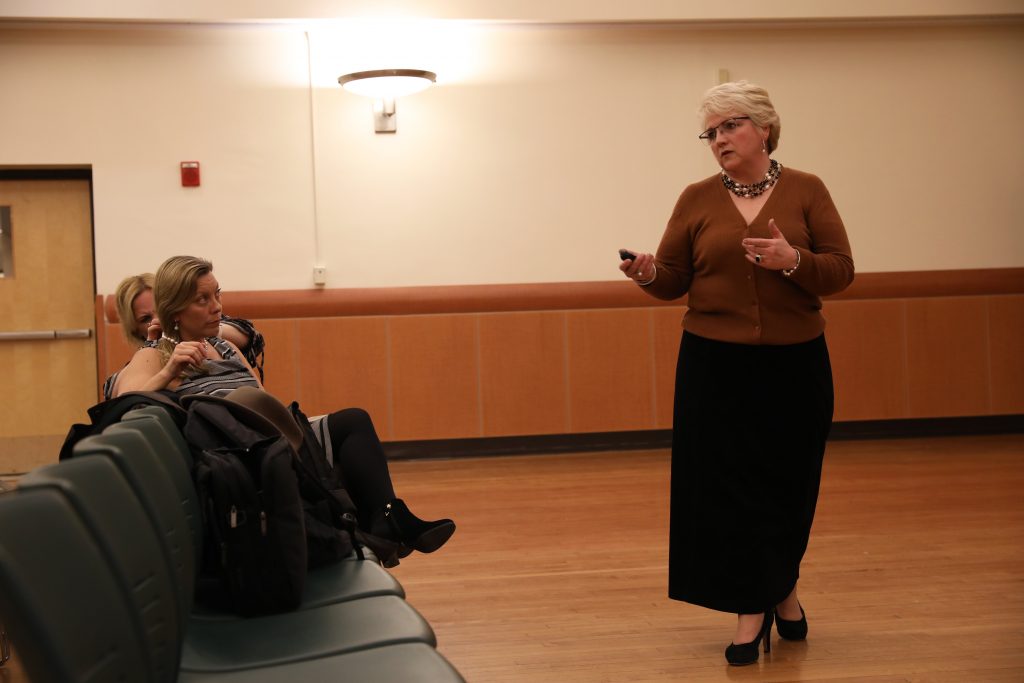Ever since her sister, Nicole Lee, was killed in a drowsy driving accident 12 years ago, Jennifer Pearce has told her sister’s story to advocate for drowsy driving victims. For the last two years, she partnered with New York state and other officials to present the drowsy driving program at Binghamton University.
On March 3, the event featured presentations by representatives from the drowsy driving program to raise awareness of the dangers of driving while sleep-deprived. The event included appearances from Pearce, Maureen Kozakiewicz, highway safety program representative for the Governor’s Traffic Safety Committee and Russell Rozensky, program director for the polysomnographic technology program at Stony Brook University.
According to Rozensky, the presentations aim to prevent future crashes caused by fatigue. Rozensky mentioned the four “Ds” that negatively affect driving abilities: drunk, drugged, distracted and drowsy driving.
“The initiative is to raise awareness for people to be aware [of] the fourth D,” Rozensky said. “Being drowsy is just as dangerous and life-threatening as being drunk or impaired from alcohol or drugs.”
Drivers around the ages of 17 to 24 are at the highest risk for a preventable crash because of a lack of experience while driving combined with sleep deprivation from school, according to Kozakiewicz. Carolena Pizzuti, a junior majoring in economics, said it was important to learn about being at increased risk of driving drowsy.
“I think this was a very good presentation,” Pizzuti said. “I think a lot of the time we don’t realize that we, especially as college students, don’t get enough sleep and we do drive. There are people who commute to this campus every day that are probably running on two hours of sleep.”
The event was organized alongside a public service announcement (PSA) competition for all New York state students to see who could create the most effective drowsy driving PSA. The competition was hosted by the National Road Safety Foundation (NRSF), an organization that aims to reduce crashes, deaths and injuries on the nation’s highways by promoting safe driving behavior, according to their website. They awarded cash prizes to the top contestants.
Two of the top three competitors were BU students: Owen Holland, a sophomore majoring in sociology, and Aneesa Addarich, a junior majoring in human development. Addarich was the first-place winner of the contest and her PSA was about a girl who is supposed to act as a designated driver on New Year’s Eve, but realizes that she is too drowsy to drive her friends home later that night. Ultimately, she and her friends decide to stay the night.
“I decided to participate because I like to express my creativity through digital media,” Addarich said. “I thought it was an important topic to bring attention to.”
Holland, the second-place winner, decided the best option was to evoke emotion with his PSA. He included clips of important memories such as graduation and birthdays, and ended the presentation with a shot of the driver’s puppy.
“I want viewers to realize that life is simply not worth the risk,” Holland said. “When thinking about everyone who will miss you, I hope that people will reconsider, spend the night somewhere and make it home to them in the morning.”
BU’s Health Promotion and Prevention Services (HPPS), which aims to deliver a suite of evidence-informed programs and services to enhance the well-being of the BU community, coordinated with presenters to reserve a space on campus for the event and advertise the PSA competition. Divine Sebuharara, health promotion coordinator for HPPS, said both winners were able to create impactful PSAs.
“Both students took a unique and creative approach to the PSA videos to help raise awareness about drowsy driving,” Sebuharara said. “I am extremely proud of them for taking the time to create such powerful messages in just 25 seconds.”



